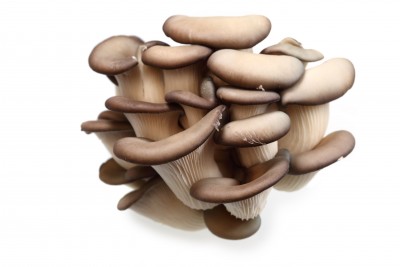Oyster Mushroom - Pleurotus ostreatus

Common Names: Oyster Mushroom, Oyster Fungus, Hiratake (Japan), Tamogitake (Japan), ping Gu (China), Bao Ngu (Vietnam), Pleurotus ostreatus, Global Oyster Mushroom
Latin Name: Pleurotus ostreatus
Origin: Asia, Europe, South America, North America
Short Introduction
The first artificial cultivation of the oyster mushroom began in Germany in the 1920s. By the 1960s, experimental cultivation was underway in China, Thailand, Pakistan, Nigeria, the USA, and the Philippines, which are now among the world’s leading producers of this mushroom. In the former Czechoslovakia, commercial oyster mushroom growing started during the 1960s, expanded after 1982, but later stagnated due to international competition following 1989. Oyster mushrooms typically fruit from late summer or early autumn through winter, and can even grow into spring during mild winters. They can be found wild or grown at home, as well as purchased from commercial farms.
Detailed Description
The most renowned and widely celebrated medicinal mushroom in the world!
Botanical Information
The oyster mushroom is an edible fungus named for its fan-like cap, which resembles the shape and color of an oyster. Cap diameters can reach up to 35 cm and are often fan-shaped, flat and smooth when young, and soft to fleshy in texture with a whitish hue. Oyster mushrooms may grow in dense clusters or layered arrangements, sometimes attaining several kilograms in total mass. Their stems may reach 4 cm in length and 3 cm in thickness. The gills are low, closely spaced, and range from white to gray. The flesh is flexible, soft in youth, later becoming firmer and fibrous, slightly corky at the base, ranging from white to grayish in color, juicy, mildly sweet in taste, and carries a strong, earthy mushroom aroma.
Origin and Distribution
The oyster mushroom is found on living or dead trunks and stumps of deciduous trees—especially beech, birch, poplar, and walnut—and rarely on conifers in mixed forests, parks, or avenues. This fungus thrives in non-calcareous soils on poor to moderately acidic substrates across much of the world, mainly in temperate and subtropical forest regions. It tends to appear in clusters or layered formations.
Usage / Dosage
The oyster mushroom is a delicious and highly favored mushroom, enjoyed by both foragers and casual cooks alike. Fresh or dried oyster mushrooms are widely used in culinary applications—added to cooked dishes, soups, sauces, or served on their own. They can be pickled in vinegar with other ingredients, dried, or smoked, though they are generally not recommended for frying. Some recipes include oyster mushroom goulash. In Eastern Europe, oyster mushrooms are sometimes fermented and served like sauerkraut. In Japanese, Korean, and Chinese cuisines, oyster mushrooms are considered a delicacy, often featured in sauces with soy sauce or added to soups. Oyster mushrooms are extremely popular in Indian gastronomy, particularly cultivated and cooked in Kerala. Many mushroom dishes and soups are popular in Central Europe as well.
The oyster mushroom is also widely utilized in herbal and folk medicine for its health benefits.
Active Compounds
Oyster mushrooms are rich in B vitamins, and also contain vitamin C, D, and K. Their most significant and biologically active components are polysaccharides, especially beta-glucans. Pleuran and dietary fiber are notably prevalent. The mushroom also offers valuable amino acids, enzymes, phenolic compounds, flavonoids, terpenoids, aromatic compounds, and polyunsaturated fatty acids. From a mineral perspective, oyster mushrooms provide calcium, phosphorus, zinc, selenium, and iron.
